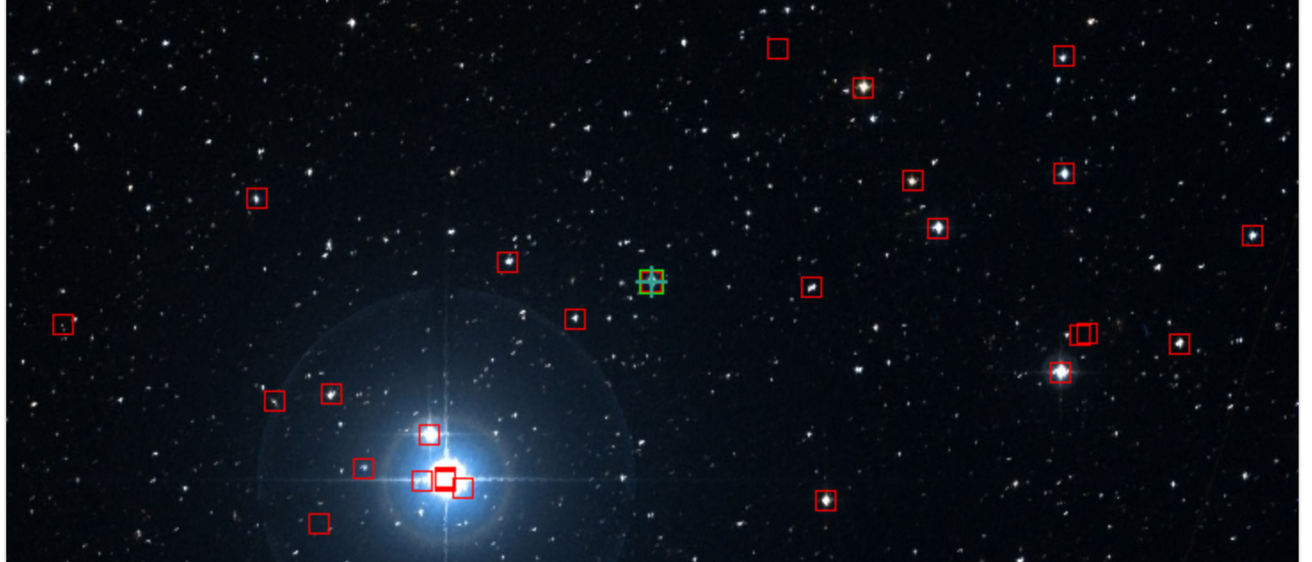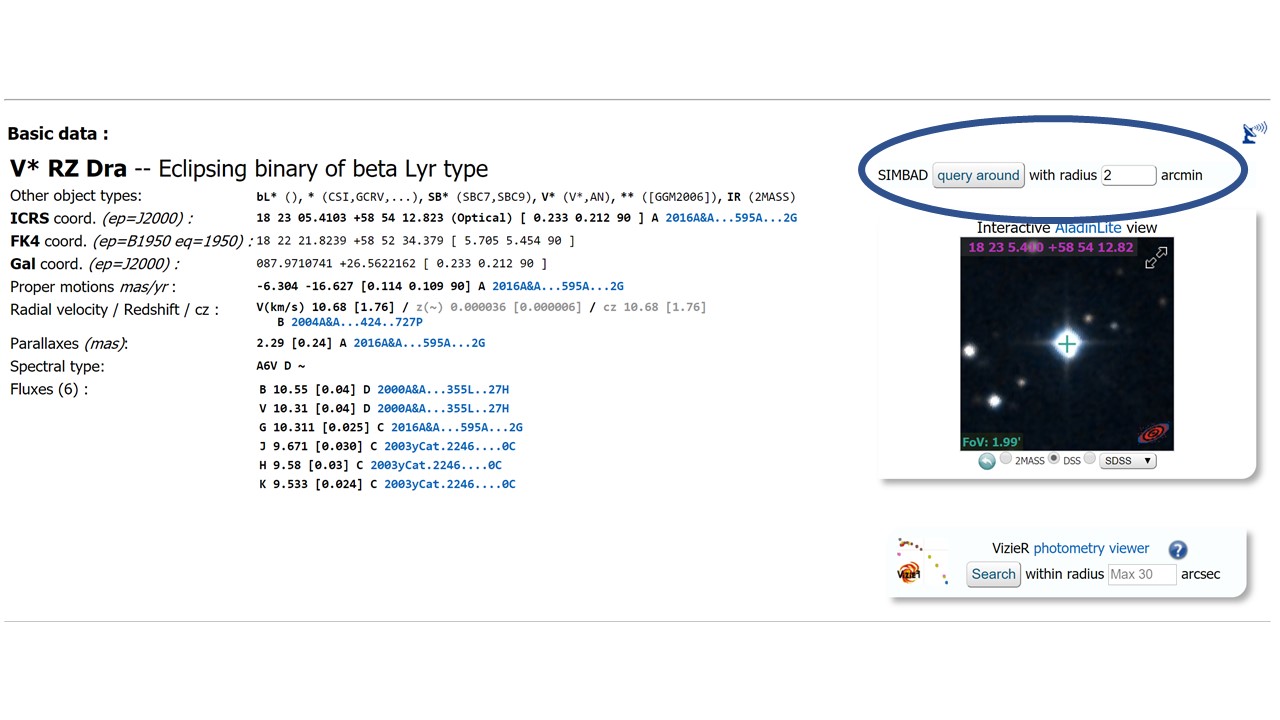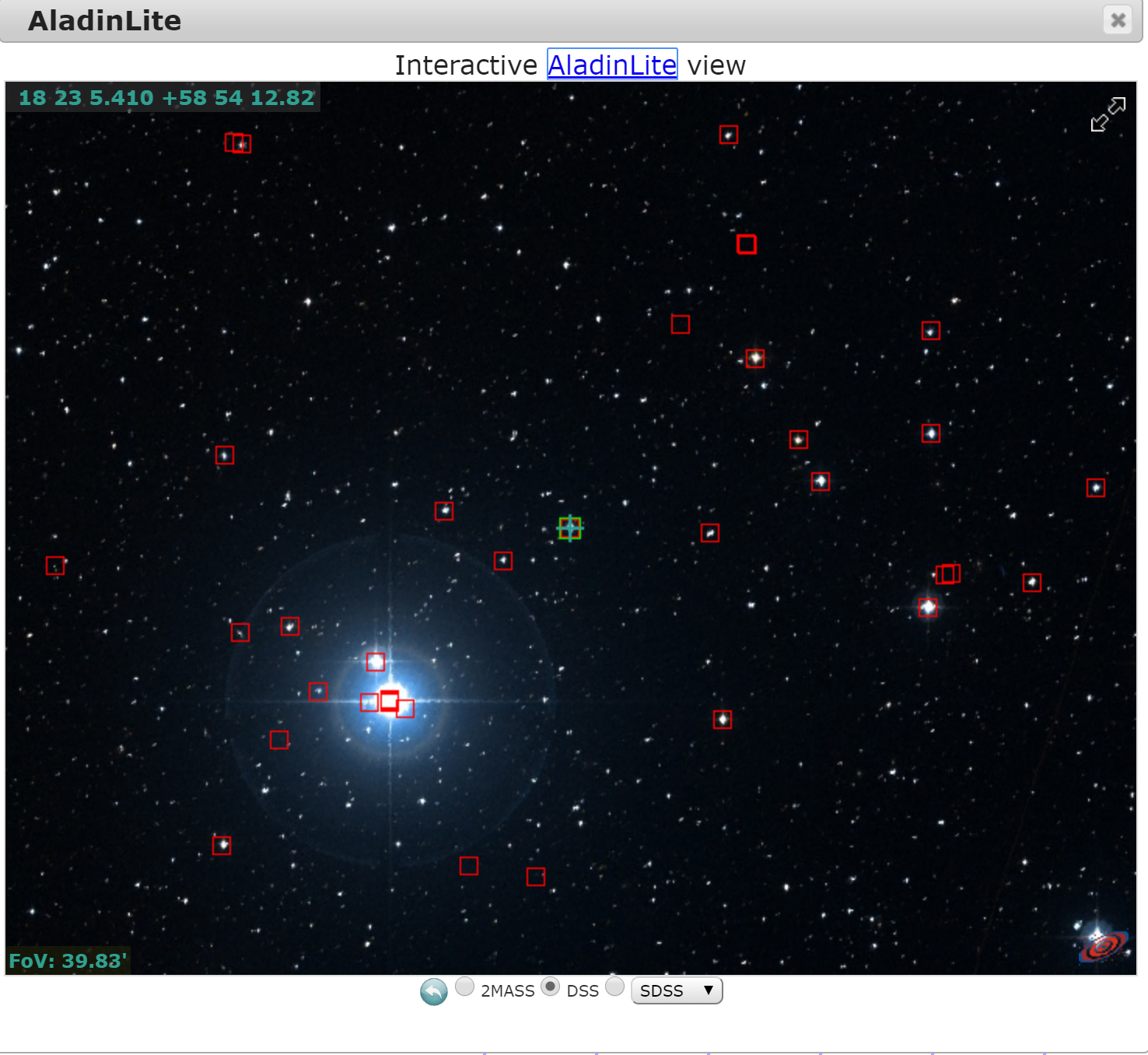
Breadcrumb
Variable Stars
Resources: SIMBAD Astronomical Database
Tutorials: Photometry in Maxim
For observing projects featuring a variable star, you will need to identify your star within your observation. This should be done using the SIMBAD Astronomical Database. First, perform a basic search for your object. This should yield a page like the one shown in Fig. 1, in which we perform this process for RZ Draconis. This page contains some basic information about your object, including alternate names, as well as some scientific references.

Next, use the right side of the screen to "query around" with a radius of 20 arcminutes (circled in Fig. 1). This will return two items: an interactive viewer showing you the objects surrounding your variable star (Fig. 2) and a list of the objects within this search zone (Fig. 3). The AladinLite viewer should be compared to one of your observations in order to identify the variable star within the field you are studying. Pay attention to the orientation of your image -- it may not be the same as the orientation shown in AladinLite. If you are unsure which star is the variable star you're studying, check with your instructor.
The red boxes in the AladinLite viewer are around those objects returned in the list. By clicking a red box within AladinLite, the associated item on the list should become highlighted.

In order to perform absolute photometry and construct your lightcurve, you will need to provide Maxim with one reference star and at least one check star. Compare your observation to the objects in the list/AladinLite viewer, and find two nearby objects in your observation that could serve this purpose. You would like stars that at around 10 - 15th magnitude in V band. For example, in this example for RZ Draconis, TYC 3916-1962-1 and TYC 3916-684-1 are both good candidates.
Similar to the process of identifying your variable star, compare your observation to the AladinLite viewer and the boxed objects to identify these stars and produce your lightcurve. When Maxim prompts you to enter their magnitudes, enter the number shown in the Mag V column for your object.